
Klaus Hentschel (born 4 April 1961) is a German physicist, historian of science and professor. He is the head of the University of Stuttgart's History of Science and Technology section of its History department. [1] [2] [3]

Klaus Hentschel (born 4 April 1961) is a German physicist, historian of science and professor. He is the head of the University of Stuttgart's History of Science and Technology section of its History department. [1] [2] [3]
Born in Bad Nauheim, Hentschel from 1979 to 1985 studied physics, philosophy, science, history and musicology at the University of Hamburg. He completed his studies in philosophy in 1985 with the master's examination, and a study in physics in 1987. After some studies in the United States, among others in Boston on a DAAD, he in 1989 received his PhD at the University of Hamburg. His thesis was entitled "Interpretationen und Fehlinterpretationen der speziellen und der allgemeinen Relativitätstheorie durch Zeitgenossen Albert Einsteins" (Interpretations and misinterpretations of the special and general relativity theory by Albert Einstein's contemporaries).
After graduation Hentschel participated in a research project by the Deutsche Forschungsgemeinschaft on epistemic modal logic. In 1991 he was appointed assistant professor at the Institute for the History of Science of the University of Göttingen. In 1995 he obtained his habilitation in Hamburg with the thesis, entitled "Zum Zusammenspiel von Instrument, Experiment und Theorie. Rotverschiebung im Sonnenspektrum und verwandte spektrale Verschiebungseffekte von 1880 bis 1960." (About the interaction of instruments, experiment and theory. The shift in the solar spectrum, and related spectral shift effects from 1880 to 1960).
In the year 1995/1996 Klaus Hentschel was Fellow at the Dibner Institute for the History of Science and Technology of Bern Dibner, and at the Massachusetts Institute of Technology (MIT). From 1996 to 2002 he was successively Assistant Professor at the Institute for the History of Science at the University of Göttingen, visiting scholar at MIT, and Visiting Professor at the Department of Philosophy at the University of Hamburg. From 2003 to 2005 he worked with a research grant from the Deutsche Forschungsgemeinschaft at the University of Bern and 2005/2006 at the University of Stuttgart in the Department of History of Science and Technology.
In 2006 Hentschel got a call for a Professorship at the University of Halle-Wittenberg for a period of five years in the field of comparative history of science which he declined. In the same year he was appointed Professor at the University of Stuttgart, where he chairs the Department of History of Science and Technology in the History department since 2006.
Articles (a selection among more than 200):

The theory of relativity usually encompasses two interrelated physics theories by Albert Einstein: special relativity and general relativity, proposed and published in 1905 and 1915, respectively. Special relativity applies to all physical phenomena in the absence of gravity. General relativity explains the law of gravitation and its relation to the forces of nature. It applies to the cosmological and astrophysical realm, including astronomy.

Ernst Waldfried Josef Wenzel Mach was an Austrian physicist and philosopher, who contributed to the physics of shock waves. The ratio of the speed of a flow or object to that of sound is named the Mach number in his honour. As a philosopher of science, he was a major influence on logical positivism and American pragmatism. Through his criticism of Newton's theories of space and time, he foreshadowed Einstein's theory of relativity.

Max Born was a German-British physicist and mathematician who was instrumental in the development of quantum mechanics. He also made contributions to solid-state physics and optics and supervised the work of a number of notable physicists in the 1920s and 1930s. Born won the 1954 Nobel Prize in Physics for his "fundamental research in quantum mechanics, especially in the statistical interpretation of the wave function".

Gustav Ludwig Hertz was a German experimental physicist and Nobel Prize winner for his work on inelastic electron collisions in gases, and a nephew of Heinrich Rudolf Hertz.

Max Theodor Felix von Laue was a German physicist who received the Nobel Prize in Physics in 1914 for his discovery of the diffraction of X-rays by crystals.

Johannes Hans Daniel Jensen was a German nuclear physicist. During World War II, he worked on the German nuclear energy project, known as the Uranium Club, where he contributed to the separation of uranium isotopes. After the war, Jensen was a professor at the University of Heidelberg. He was a visiting professor at the University of Wisconsin–Madison, the Institute for Advanced Study, University of California, Berkeley, Indiana University, and the California Institute of Technology.

Johannes Stark was a German physicist who was awarded the Nobel Prize in Physics in 1919 "for his discovery of the Doppler effect in canal rays and the splitting of spectral lines in electric fields". This phenomenon is known as the Stark effect.
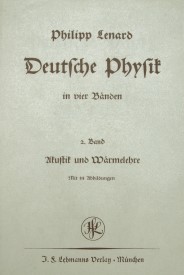
Deutsche Physik or Aryan Physics was a nationalist movement in the German physics community in the early 1930s which had the support of many eminent physicists in Germany. The term was taken from the title of a four-volume physics textbook by Nobel laureate Philipp Lenard in the 1930s.
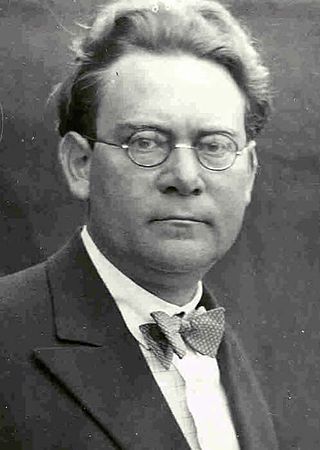
Hans Reichenbach was a leading philosopher of science, educator, and proponent of logical empiricism. He was influential in the areas of science, education, and of logical empiricism. He founded the Gesellschaft für empirische Philosophie in Berlin in 1928, also known as the "Berlin Circle". Carl Gustav Hempel, Richard von Mises, David Hilbert and Kurt Grelling all became members of the Berlin Circle.
The history of special relativity consists of many theoretical results and empirical findings obtained by Albert A. Michelson, Hendrik Lorentz, Henri Poincaré and others. It culminated in the theory of special relativity proposed by Albert Einstein and subsequent work of Max Planck, Hermann Minkowski and others.
Ernst J. L. Gehrcke was a German experimental physicist. He was director of the optical department at the Reich Physical and Technical Institute. Concurrently, he was a professor at the University of Berlin. He developed the Lummer–Gehrcke method in interferometry and the multiplex interferometric spectroscope for precision resolution of spectral-line structures. As an anti-relativist, he was a speaker at an event organized in 1920 by the Working Society of German Scientists. He sat on the board of trustees of the Potsdam Astrophysical Observatory. After World War II, he worked at Carl Zeiss Jena, and he helped to develop and become the director of the Institute for Physiological Optics at the University of Jena. In 1949, he began work at the German Office for Materials and Product Testing. In 1953, he became the director of the optical department of the German Office for Weights and Measures.

Oskar Kraus was a Czech philosopher and jurist.

Paul Karl Maria Harteck was an Austrian physical chemist. In 1945 under Operation Epsilon in "the big sweep" throughout Germany, Harteck was arrested by the allied British and American Armed Forces for suspicion of aiding the Nazis in their nuclear weapons program and he was incarcerated at Farm Hall, an English house fitted with covert electronic listening devices, for six months.
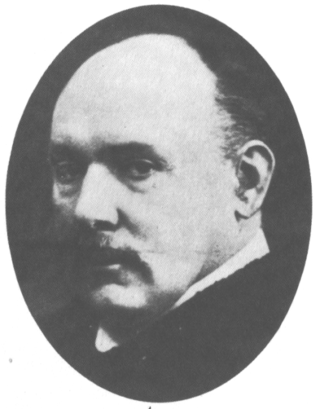
Alfred Heinrich Bucherer was a German physicist, who is known for his experiments on relativistic mass. He also was the first who used the phrase "theory of relativity" for Einstein's theory of special relativity.
Paul Gerber was a German physics teacher. He studied in Berlin from 1872 to 1875. In 1877 he became a teacher at the Realgymnasium in Stargard in Pommern. Gerber is known for his controversial work on the speed of gravity and the perihelion shift of Mercury's orbit.
Criticism of the theory of relativity of Albert Einstein was mainly expressed in the early years after its publication in the early twentieth century, on scientific, pseudoscientific, philosophical, or ideological bases. Though some of these criticisms had the support of reputable scientists, Einstein's theory of relativity is now accepted by the scientific community.
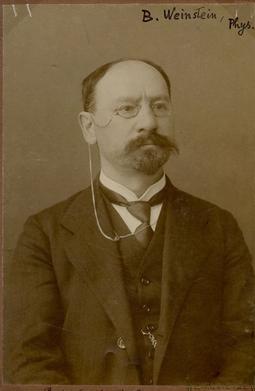
Max Bernhard Weinstein was a German physicist and philosopher. He is best known as an opponent of Albert Einstein's Theory of Relativity, and for having written a broad examination of various theological theories, including extensive discussion of pandeism.
Franz Rudolf Paul Gruner was a Swiss physicist.
Jürgen Renn is a German historian of science, and since 1994 Director at the Max Planck Institute for the History of Science in Berlin.
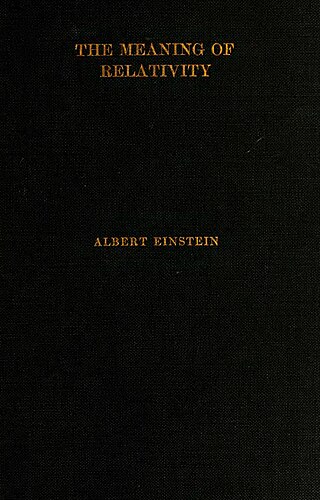
The Meaning of Relativity: Four Lectures Delivered at Princeton University, May 1921 is a book published by Princeton University Press in 1922 that compiled the 1921 Stafford Little Lectures at Princeton University, given by Albert Einstein. The lectures were translated into English by Edwin Plimpton Adams. The lectures and the subsequent book were Einstein's last attempt to provide a comprehensive overview of his theory of relativity and is his only book that provides an accessible overview of the physics and mathematics of general relativity. Einstein explained his goal in the preface of the book's German edition by stating he "wanted to summarize the principal thoughts and mathematical methods of relativity theory" and that his "principal aim was to let the fundamentals in the entire train of thought of the theory emerge clearly". Among other reviews, the lectures were the subject of the 2017 book The Formative Years of Relativity: The History and Meaning of Einstein's Princeton Lectures by Hanoch Gutfreund and Jürgen Renn.